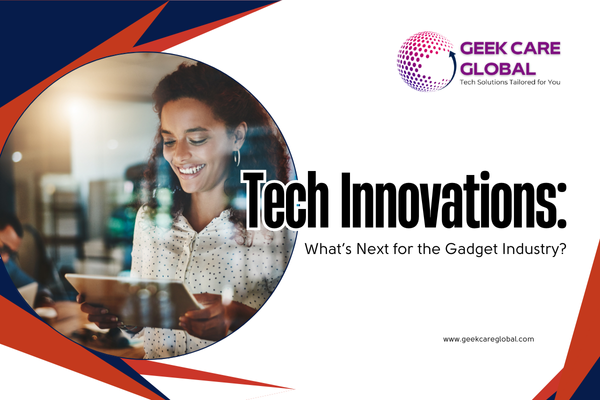
Introduction
In today’s digital-first world, efficient and consistent IT service delivery is critical to business success. Whether you're supporting internal teams or external customers, your ability to deliver seamless, reliable, and scalable services can define your brand’s reputation and operational resilience.
What is ITSM and its objectives?
IT Service Management (ITSM) refers to the strategic approach organizations use to design, deliver, manage, and improve the way IT services are provided to customers or end-users. Rather than just managing IT systems, ITSM focuses on aligning IT services with business needs to deliver maximum value.
ITSM is built around standardized processes, commonly guided by frameworks like ITIL (Information Technology Infrastructure Library). It incorporates policies, procedures, and best practices that help teams consistently deliver quality service, whether in IT outsourcing services, IT support for businesses, or internal departments.
Core Objectives of ITSM:
- Deliver Quality IT Services: Ensure reliable and efficient support for users through defined processes.
- Enhance User Experience: Minimize disruptions and improve satisfaction with faster resolutions and transparent service.
- Align IT with Business Goals: Ensure that all IT efforts support broader business strategies and performance metrics.
- Optimize Resources: Streamline workflows, reduce manual tasks, and improve service desk efficiency.
- Promote Continuous Improvement: Use data and feedback to evolve services and adapt to changing business environments.
- Support Governance & Compliance: Ensure that service delivery aligns with regulatory and organizational standards.
Whether you're a startup offering IT services for small business or a global enterprise managing cloud computing & migration, ITSM provides a reliable structure to keep operations smooth and customer-centric.
That’s where IT Service Management (ITSM) comes in. When executed with the right strategies, ITSM empowers organizations to streamline operations, resolve incidents faster, and align IT services with business goals. In this blog, we’ll explore 10+ proven ITSM strategies that enhance consistency, boost efficiency, and ensure long-term service success, especially in areas like IT outsourcing services, IT services for small businesses, and enterprise-level operations.
1. Standardize IT Processes with ITIL Framework
Adopting the ITIL (Information Technology Infrastructure Library) framework is foundational to delivering consistent and high-quality IT support. Standardized processes help reduce errors, enhance communication, and improve the delivery of IT services for small businesses and enterprises alike. It ensures that each step, from ticket logging to resolution, follows best practices. Businesses offering IT outsourcing services benefit from this standardization, as it guarantees dependable results across multiple clients. The ITIL structure also aligns well with Consultancy and Advisory Services, offering clients a blueprint to improve their internal operations while ensuring compliance, efficiency, and accountability.
Key Benefits:
- Reduces variability in service execution
- Aligns service delivery with global best practices
- Enhances client confidence and satisfaction
Real-Time Example:
A managed service provider using ITIL principles reduced ticket resolution time by 30% across multiple retail clients by applying standardized triage and escalation workflows.
2. Implement Effective Incident and Problem Management
Efficient incident and problem management minimizes downtime, improves customer satisfaction, and boosts operational productivity. This strategy involves quick identification of issues, root cause analysis, and implementing long-term solutions. For IT Support for Businesses, this means reduced response time, better resource utilization, and improved service reliability. By maintaining a knowledge base of recurring issues, teams can resolve problems proactively. This approach is particularly effective for Cybersecurity Services, where rapid incident containment and remediation are crucial to protecting sensitive data and maintaining client trust in both small and large-scale IT environments.
Key Actions:
- Create incident triage flows and escalation matrices
- Maintain a database of known issues and fixes
- Conduct root cause analysis for high-impact problems
Real-Time Example:
A cybersecurity firm reduced ransomware-related outages by using automated incident alerts, which allowed the IT team to isolate threats in real time and perform deeper forensic analysis post-resolution.
3. Automate Repetitive IT Tasks
Automation enhances efficiency, reduces costs, and limits human error. By automating routine tasks such as software patching, password resets, and ticket routing, teams can focus on strategic improvements. This is especially beneficial for Software Development Services and Cloud Computing & Migration, where infrastructure scalability and uptime are essential. Automation also supports IT outsourcing services by enabling 24/7 operations without significantly increasing manpower. Integrated tools can provide alerts, auto-resolve issues, or escalate when human intervention is needed, ensuring service continuity and responsiveness across departments.
Common Automation Areas:
- Automated ticket categorization and assignment
- Scripted software installations and patches
- Proactive server and network monitoring
Real-Time Example:
A cloud services provider cut manual work by 50% by automating VM provisioning and incident flagging via integrated ITSM tools, benefiting both internal teams and outsourcing clients.
4. Launch a Self-Service Portal for Users
Providing a self-service portal empowers users to resolve common issues on their own. Features like ticket submission, knowledge base access, and real-time status tracking reduce help desk loads and improve end-user experience. This is particularly valuable in Website Design and Development and Digital Marketing Services, where quick access to guidance minimizes project delays. For IT services for small business, self-service portals provide cost-effective support while enhancing customer satisfaction. Businesses can also tailor these portals to include FAQs, guided workflows, and chatbot assistance to streamline interactions.
Key Features:
- Knowledge base with searchable articles
- Real-time ticket submission and tracking
- AI chat support and guided workflows
Real-Time Example:
A digital marketing agency reduced support queries by 40% by implementing a branded portal with common error resolutions and account FAQs for clients.
5. Set and Monitor Clear SLAs
Service Level Agreements (SLAs) define performance benchmarks for IT support. Clear SLAs build accountability, foster trust, and align IT services with business objectives. These agreements are crucial in IT outsourcing services, where service expectations must be documented and monitored. For Consultancy and Advisory Services, SLAs provide clients with transparency and assurance of quality. Monitoring SLAs ensures teams meet response/resolution targets, helping organizations refine processes, allocate resources better, and maintain compliance across complex service environments.
Key Practices:
- Define SLAs based on service criticality
- Track SLA breaches and automate escalation
- Share SLA compliance reports with clients
Real-Time Example:
An IT outsourcing provider improved customer retention by introducing tiered SLAs for small business clients, helping prioritize urgent issues without delaying lower-tier requests.
6. Maintain a Comprehensive CMDB
A Configuration Management Database (CMDB) offers visibility into your entire IT infrastructure, mapping the relationships between assets, software, users, and configurations. This visibility is critical when managing Cloud Computing & Migration, as it helps assess dependencies and avoid disruptions. A robust CMDB supports informed decision-making in Software Development Services and enables better change and incident management. It is also key for businesses offering IT Support for Businesses, ensuring teams have real-time insight into system health, relationships, and risks.
Benefits:
- Understand dependencies between IT assets
- Simplify change, incident, and asset management
- Improve risk and impact analysis before upgrades
Real-Time Example:
A software development company reduced deployment errors by 60% by mapping development, staging, and production systems in a CMDB, ensuring smoother code transitions.
7. Real-Time Monitoring and KPI Reporting
To ensure services run smoothly, organizations must monitor systems in real-time and track Key Performance Indicators (KPIs). Metrics like uptime, incident resolution time, and user satisfaction scores allow for agile decision-making. This strategy aligns perfectly with Cybersecurity Services, where real-time threat detection is vital. Integrating monitoring tools into Digital Marketing Services platforms ensures that performance is optimized 24/7. Real-time analytics support proactive service delivery, giving both in-house IT and IT outsourcing services providers the tools to anticipate and mitigate issues.
Key Metrics to Monitor:
- First response time
- Resolution rate
- Uptime/downtime trends
- Ticket backlog and escalation rate
Real-Time Example:
A cybersecurity firm used real-time dashboards to monitor firewall activity, helping them detect anomalies and prevent data breaches before they escalated.
8. Streamline Change Management Processes
Change is constant in IT environments, and poorly managed changes can lead to outages or security issues. A robust change management strategy ensures that updates, migrations, or deployments follow an approval workflow, risk assessment, and rollback plan. This is especially essential in Software Development Services and Website Design and Development, where client-facing features evolve frequently. For IT outsourcing services, structured change control fosters trust and reduces service interruptions. A successful change management system also integrates feedback and post-implementation review to enhance future readiness.
Best Practices:
- Establish a Change Advisory Board (CAB)
- Use automated change scheduling tools
- Maintain rollback and backup protocols
Real-Time Example:
A website design company improved update reliability by 45% after using a structured change approval workflow that included stakeholder sign-offs and rollback testing.
9. Train IT Staff on Tools and Best Practices
People are at the heart of ITSM. Continuous training ensures that IT professionals are up to date on the latest tools, technologies, and compliance standards. This benefits IT services for small business by enabling lean teams to operate more effectively. Training is especially important in specialized areas like Cybersecurity Services, Cloud Computing & Migration, and Consultancy and Advisory Services. Upskilled teams not only respond faster but also offer more strategic insights to clients, improving service quality and customer satisfaction.
Training Focus Areas:
- Incident management and SLA compliance
- Cybersecurity protocols
- Cloud tools and integration
- Communication and client-facing etiquette
Real-Time Example:
A consultancy firm upskilled its Tier 1 support team, resulting in a 25% boost in first-contact resolution rates and improved client satisfaction across key accounts.
10. Align IT Services with Business Goals
IT services must support and accelerate business outcomes. Aligning ITSM strategies with organizational objectives helps prioritize the right initiatives, allocate resources more effectively, and deliver measurable value. Whether you're offering Digital Marketing Services, managing Software Development Services, or providing IT Support for Businesses, understanding the client's business drivers is essential. This alignment transforms IT from a cost center into a growth enabler. Business-aligned ITSM also promotes cross-functional collaboration and supports long-term scalability.
Key Alignment Areas:
- Map IT outcomes to business KPIs
- Involve business leaders in strategy sessions
- Focus on revenue-generating and customer-impact areas
Real-Time Example:
An IT support firm customized dashboards and reports to show how system uptime directly impacted online sales conversions for an eCommerce client.
To make these strategies even easier to grasp, we’ve created a clear and concise infographic below that highlights the Top 10 ITSM approaches designed to enhance consistency, boost efficiency, and ensure success across your IT service delivery.
Look at the more bonus strategies
11. Use AI and Chatbots to Improve First-Response
AI-powered virtual agents can resolve routine queries and direct complex issues to the right teams. This is crucial for IT outsourcing services, enabling 24/7 support while reducing operational costs.
12. Implement Continual Service Improvement (CSI)
Analyze metrics, gather feedback, and evolve processes to ensure ITSM adapts to business changes. CSI works across all areas—from Cybersecurity Services to Cloud Migration.
13. Integrate ITSM Tools with Other Business Systems
Connect ITSM platforms with CRM, HR, and ERP tools to improve data sharing, automate approvals, and provide seamless support across departments.
14. Emphasize User Experience (UX) in IT Services
Focus on intuitive interfaces, personalized communication, and efficient workflows to boost user satisfaction, especially in Website Design and Development.
15. Conduct Regular ITSM Audits and Assessments
Periodic audits help organizations track performance, identify gaps, and maintain compliance. This ensures consistent service quality across IT Support for Businesses and all managed IT services.
Conclusion
Modern businesses thrive on agility, reliability, and innovation—all of which hinge on excellent IT service delivery. These top 10+ ITSM strategies help you build a robust foundation that not only supports daily operations but also drives growth, user satisfaction, and digital transformation.
By standardizing processes, investing in automation, measuring performance, and aligning with business goals, you can transform IT from a cost center into a value driver. And that’s how ITSM becomes a strategic advantage—not just a support function.

